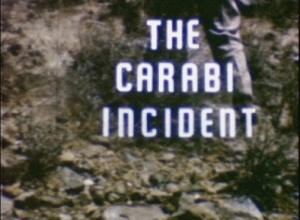
"Once again Harry W. Atwood has used the desert locales of the Southwest and his mastery of outdoor color filming to mount a dramatic and exciting action picture. Although The Carabi Incident is truly an incident rather than a full-fledged photoplay, it does manage to include an abandoned mine, a lost prospector, a worried young girl and her companion — and both a happy and a tragic ending! The production is enriched with Mr. Atwood's usually fine selection of camera angles and suspenseful editing. For these reviewers, however, an excess of dialog subtitles was a drag on the film's development." Movie Makers, Dec. 1952, 341.
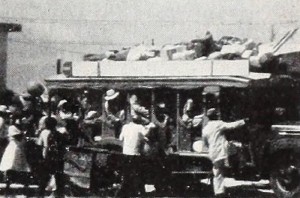
"Fifty-odd owners of small Cessna planes take off from Milwaukee in the dead of winter to pay a flying visit to the principal points of interest in Guatemala. Dr. Herman A. Heise has made a competent and consistently interesting record film of the journey, while his wife furnishes a bright, informal commentary. The capable filming is happily complemented by well-paced editing and a suitable scoring of native Guatemalan music. On occasion, however, a too matter-of-fact pictorial approach and a few over-precious details in the narrative detract slightly from the overall excellence of Caravan to Guatemala as a record film." Movie Makers, Dec. 1950, 466.
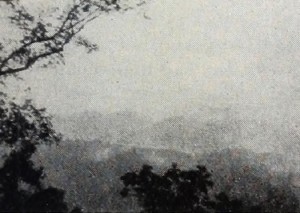
"If the lead title — Carolina Holiday — promises run-of-the-mill vacation footage, there is surely nothing else routine about this production. It is, rather, a rhapsody of color and a tone poem of contrasting moods, to which Henry K. Burns, jr., has brought fine technical skill and a perceptive eye for composition. Although rich in scenic beauty, his views are never static, for movement in a score of things — drifting fog, rustling leaves, an unexpected snow flurry — introduce animation unlooked for in the subject. An unfortunate commentary and hapless scoring (save toward the end) were detrimental to the film's achieving higher honors." Movie Makers, Dec. 1950, 466-467.

"Casa Loma (house on a hill) was built by Sir Henry Pellat in Toronto. The design includes many of the things he admired in the castles of Europe. Much of the interior was imported. In this magnificence, Sir Henry lived until he could no longer afford the mounting city taxes. Out filmer takes us through this old castle that we may relive some of its greatness. The picture was made for the Kiwanis Club which was so active in reclaiming Casa Loma for Toronto" PSA Journal, Oct. 1961, 47-48.
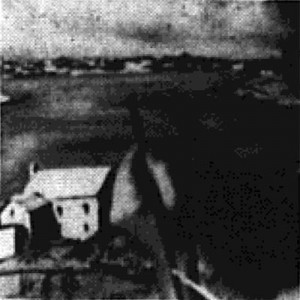
""That Which Makes the Picture" introduces its audience to the art of painting. Using a charming New England harbor scene, the viewer is shown the beginning sketches, the application of the basic colors, and the finishing touches to completion. After viewing the film, one has a greater appreciation for the care and attention to detail required of the artist working in oil paints" PSA Journal, Oct. 1963, 41.
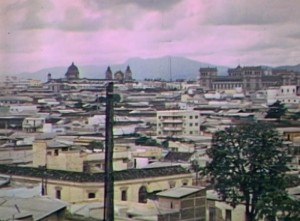
Kodachrome travelogue showing life and culture in Guatemala and Panama.
"Among the ten best, Century of Progress, in Kodacolor, by Herbert H. Johnson, ACL, is a striking illustration of the degree of perfection that color motion picture photography has attained. Its studied angles and dignified composition are augmented by excellent photography. Mr. Johnson paid careful attention to the very important point of exact exposure in relation to color value and, as a result, brought a new version of the Fair to the one who had never seen it in color before. By taking plenty of time he was able to single out the best camera positions and wait for the lighting that was most favorable. The excellent handling of the camera brought a sense of intimacy to each scene. The film's only fault is an excessive use of lap dissolves which detracted somewhat from the smoothness of the continuity." Movie Makers, Dec. 1933, 499.
"In China's Gifts to the West, we have what may be termed a tour de force of cinematic cutting. The most interesting part of the film is made up of a series of beautifully composed and photographed "stills," but the duration of each of these shots is so carefully timed that the entire sequence is fused into a relationship which conveys a distinct impression of cinematic motion — perhaps not "motion" in the ordinary sense of physical activity, but rather the deeper and more fundamental activity of the mind as it contemplates, one after the other, the various ideas which make up the unity of a conception. This has been accomplished by Mr. Space in his excellent choice of illustrations, which are projected into the mind in exactly the right order and appearance. Beside this purely cinematic achievement, the maker of the film is to be congratulated on his excellent taste in selecting and displaying objects of art to the best advantage. The photographic technique employed in producing closeups and ultra closeups of fabrics, china and other materials is undeniably pretty close to perfection." Movie Makers, Dec. 1936, 551-552.
"A Chinese and an American boy find China's products in the latter's home." The Educational Screen, Jan. 1946, 23.
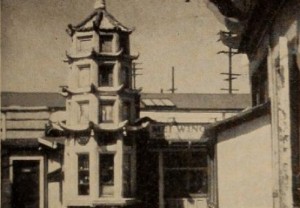
"An idol stolen from a Chinese temple and the efforts of a loyal retainer to recover it provide George Kirstein with a novel springboard for the unfolding of this unusual travel film. Subsequent events carry the principals from New York to Chicago, through the Southwest to Los Angeles and Hollywood, up the coast to San Francisco and finally back to New York for restoration of the idol. Far from hindering the sightseeing sequences, Mr. Kirstein's device enhances the presentation of this material. While the camera handling is satisfying throughout, tighter editing would speed up the pace and heighten dramatic interest." Movie Makers, Dec. 1949, 471.
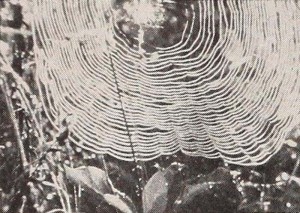
"Combining the sensitivity of an artist and a camera skill that theoretically only professional experts could acquire, Robert P. Kehoe has produced, in Chromatic Rhapsody, a film that would command the amazed admiration of any movie club in the country. This beautiful picture can only be described as a scenic — a scenic held together rather tenuously by editing to create a symphonic arrangement of color and to associate scenes with the seasons. It is in the sheer beauty of color cinematography that Chromatic Rhapsody excels. This reviewer has never seen, in any medium, more gorgeous color photographs of autumnal foliage and winter landscapes. One is so impressed with the flawless color that he is inclined to suspect that nature puts on a special show for Mr. Kehoe. The truth is probably that Mr. Kehoe has a special understanding of nature and an intuitional sensitivity to light and color. For the rest, as Mr. Kehoe would say, he simply follows exposure instructions. The film is marred somewhat by lack of complete camera steadiness, the only flaw in an otherwise superb cinematic accomplishment. A charming musical score, arranged by double turntable, accompanies the movie's presentation." Movie Makers, Dec. 1939, 634.
Total Pages: 37